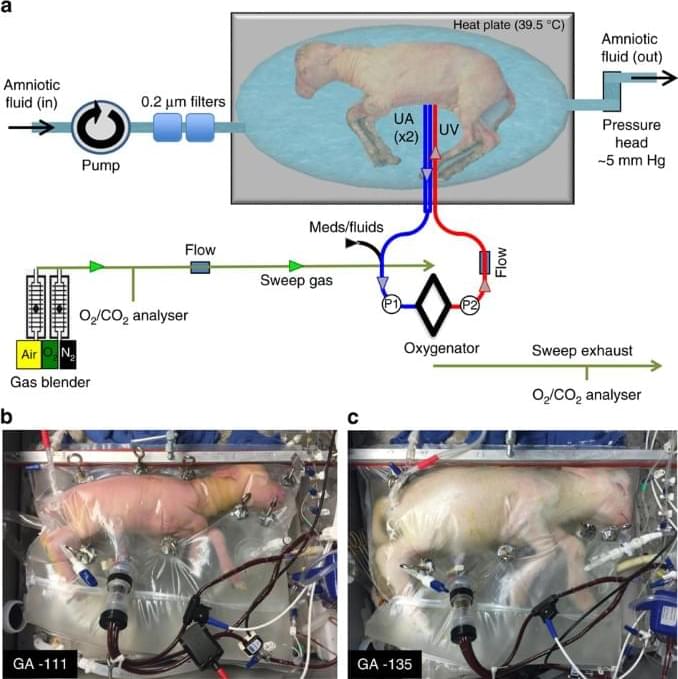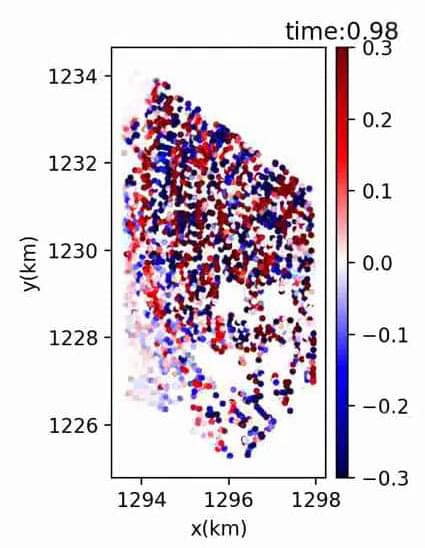
Get the latest international news and world events from around the world.


Massive Geomagnetic Storm: Coronal Mass Ejection From the Sun Could Knock Out the Power Grid and Internet
On September 1 and 2, 1859, telegraph systems around the world failed catastrophically. The operators of the telegraphs reported receiving electrical shocks, telegraph paper catching fire, and being able to operate equipment with batteries disconnected. During the evenings, the aurora borealis, more commonly known as the northern lights, could be seen as far south as Colombia. Typically, these lights are only visible at higher latitudes, in northern Canada, Scandinavia, and Siberia.
What the world experienced that day, now known as the Carrington Event, was a massive geomagnetic storm. These storms occur when a large bubble of superheated gas called plasma is ejected from the surface of the sun and hits the Earth. This bubble is known as a coronal mass ejection.
The plasma of a coronal mass ejection consists of a cloud of protons and electrons, which are electrically charged particles. When these particles reach the Earth, they interact with the magnetic field that surrounds the planet. This interaction causes the magnetic field to distort and weaken, which in turn leads to the strange behavior of the aurora borealis and other natural phenomena. As an electrical engineer who specializes in the power grid, I study how geomagnetic storms also threaten to cause power and internet outages and how to protect against that.

An extra-uterine system to physiologically support the extreme premature lamb
Circa 2017
The ability to support the development of a premature fetus in the form of an extracorporeal system has had limited success. Here, the authors show that an extra-uterine device that mimics the intra-uterine environment can provide physiologic support for the extreme premature lamb fetus for four weeks.

Top 4 DALL.E alternatives, text-to-image generators
In 2020, OpenAI introduced GPT-3 and, a year later, DALL.E, a 12 billion parameter model, built on GPT-3. DALL.E was trained to generate images from text descriptions, and the latest release, DALL.E 2, generates even more realistic and accurate images with 4x better resolution. The model takes natural language captions and uses a dataset of text-image pairings to create realistic images. Additionally, it can take an image and create different variations inspired by original images.
DALL.E leverages the ‘diffusion’ process to learn the relationship between images and text descriptions. In diffusion, it starts with a pattern of random dots and tracks it towards an image when it recognises aspects of it. Diffusion models have emerged as a promising generative modelling framework and push the state-of-the-art image and video generation tasks. The guidance technique is leveraged in diffusion to improve sample fidelity for images and photorealism. DALL.E is made up of two major parts: a discrete autoencoder that accurately represents images in compressed latent space and a transformer that learns the correlations between language and this discrete image representation. Evaluators were asked to compare 1,000 image generations from each model, and DALL·E 2 was preferred over DALL·E 1 for its caption matching and photorealism.
DALL-E is currently only a research project, and is not available in OpenAI’s API.

Psilocybin Increases Brain Connectivity in People With Depression After Use
Summary: People with depression who responded to psilocybin therapy showed an increase in brain connectivity for up to three weeks following treatment. The increased brain connectivity was correlated with self-reported improvements in depression symptoms.
Source: Imperial College London.
Psilocybin, the psychedelic compound found in magic mushrooms, helps to “open up” depressed people’s brains, even after use, enabling brain regions to talk more freely to one another.


UrbanDenoiser: An AI application that filters out city noise to allow for clearer seismic sensor data
A team of researchers at Stanford University, working with a colleague at the Chinese Academy of Sciences, has built an AI-based filtration system to remove noise from seismic sensor data in urban areas. In their paper published in the journal Science Advances, the group describes training their application and testing it against real data from a prior seismic event.
In order to provide advance warning when an earthquake is detected, scientists have placed seismometers in earthquake-prone areas, including urban areas where quakes do the most damage and harm or kill the most people. But seismologists have found it troublesome to sort out seismic data related to natural ground movements from data related to city life. They note that human activities in cities, such as vehicles and trains, produce a lot of seismic noise. In this new effort, the researchers developed a deep learning application that determines which seismic data is natural and which is man-made and filters out those that are non-natural.
The researchers call their new application UrbanDenoiser. It was built using a deep-learning application and trained on 80,000 samples of urban seismic noise along with 33,751 samples from recorded natural seismic activity. The team applied their filtering system to seismic data recorded in Long Beach, California, to see how well it worked. They found it improved the level of desired signals compared to background noise by approximately 15 decibels. Satisfied with the results, they used UrbanDenoiser to analyze data from an earthquake that struck a nearby area in 2014. They found the application was able to detect four times the amount of data compared to the sensors without the filtering.

Autonomous vehicles could prove to be future model for delivery services, study finds
The notion of self-driving vehicles is currently met with equal parts wonder and alarm. But a new study reveals how the pros may outweigh the cons as a business strategy.
An article titled “Impact of Autonomous Vehicle Assisted Last-Mile Delivery in Urban to Rural Settings” determines that this technology reduces the completion time of delivery tours and provides the most cost-effective business model. It appears in Transportation Science.
“The starting point of this paper involved the United States Postal Service announcing its idea to start using autonomous vehicles in rural routes,” said Sara Reed, assistant professor of business analytics at the University of Kansas.

“Probing the Dark Universe” — A Lecture
In this one-hour public lecture Josh Frieman, director of the Dark Energy Survey, presents an overview of our current knowledge of the universe and describe new experiments and observatories. Over the last two decades cosmologists have made remarkable discoveries: Only 4 percent of our universe is made of ordinary matter — atoms, molecules, etc. The other 96 percent is dark, in forms unlike anything with which we are familiar. About 25 percent is dark matter, which holds galaxies and larger-scale structures together and may be a new elementary particle. And 70 percent is thought to be dark energy, an even more mysterious entity which speeds up the expansion of the universe. Josh Frieman is senior staff scientist at the Fermilab and Professor of Astronomy and Astrophysics and member of the Kavli Institute for Cosmological Physics at the University of Chicago. The Dark Energy Survey is a collaboration of 300 scientists from 25 institutions on 3 continents, which built and uses a powerful 570-Megapixel camera on a telescope in Chile to carry out a 5-year survey of 300 million galaxies and thousands of supernovae to probe dark energy and the origin of cosmic acceleration.